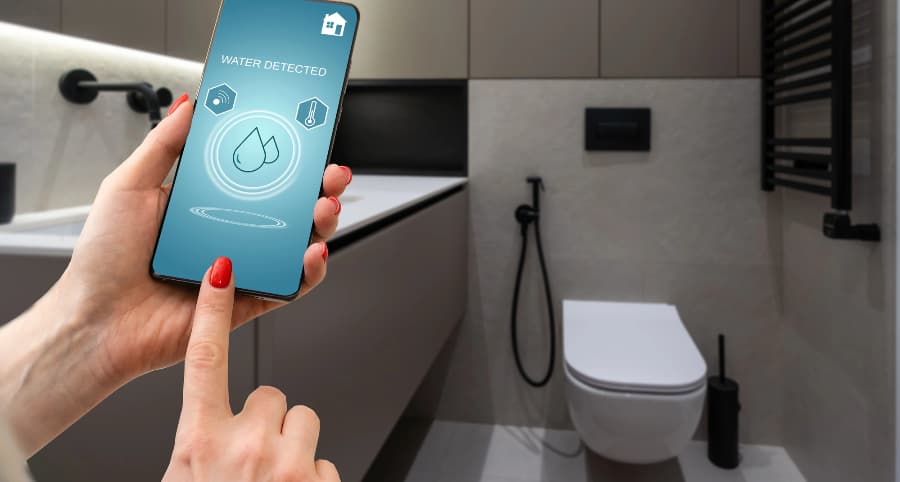How does a water sensor work and why install one with your Riverside smart home?

One minor leak at your house can lead to big difficulties and thousands of dollars in damage. You have to safeguard against this danger; luckily, there’s a straightforward way to do so. A water sensor is a simple, effective, and affordable solution. Explore how they work and why you ought to connect water sensors to your Riverside smart home.
How water sensors safeguard Riverside your home
Water enters homes in numerous ways, whether from an appliance malfunction, plumbing issue, storm-related event, or simple human error. However it happens, you need to know at once, and this is why water sensors are important. But how precisely do they work?
Many water sensors are conductive and function with two electrodes. When water comes in contact with the electrodes, an electrical circuit is formed, setting off your alarm. You’ll also come across capacitive sensors that release an electrical field. When water reaches the conductive areas of these sensors, the field is interrupted, and your alarm sounds. Optical sensors utilizing infrared LED light are an additional choice.
Get more from your water sensor
A few specialized water sensors offer even more defense as they have integrated temperature sensors. This is an effective way to prevent frozen pipes. If there’s an extreme drop in temperature, you’ll find out immediately. Taking measures before pipes break will shield you from flooding and expensive repairs.
Why incorporate water sensors into your Riverside smart home?
When water emergencies happen, you have to be warned at once. You can attain this objective by connecting water sensors to your smart home. Whether you’re on site to hear the alarm or away, you’ll get an instant alert on your cell phone. In addition, your round-the-clock monitoring team will be informed. Every moment is critical in a water emergency to limit the destruction and disruption to your life.
Where should you put water sensors?
Any spot prone to water infiltration is an appropriate place for water sensors. Consider installing in these locations:
- Bathrooms: Attach close to bathtubs or behind toilets.
- Basements: Water often infiltrates lower levels through leaky walls or because of excessive rain or broken sump pumps.
- Next to water heaters or appliances: Any water-utilizing appliance could leak in time.
- Below sinks: Water sensors are perfect for discovering pipe leaks in place you can’t see.
- Attics: Identify roof leaks promptly and avoid expensive repairs.
Get water sensors with your Vivint smart home
Give your property the robust protection it needs with Vivint’s innovative tools. Our water sensors in Riverside link to your Vivint mobile app to provide instant updates when your alarm activates. You also enjoy incorporated temperature sensors to prevent frozen pipes. Discover all the smart home components available in Riverside by reaching out to (951) 477-3741 today.
